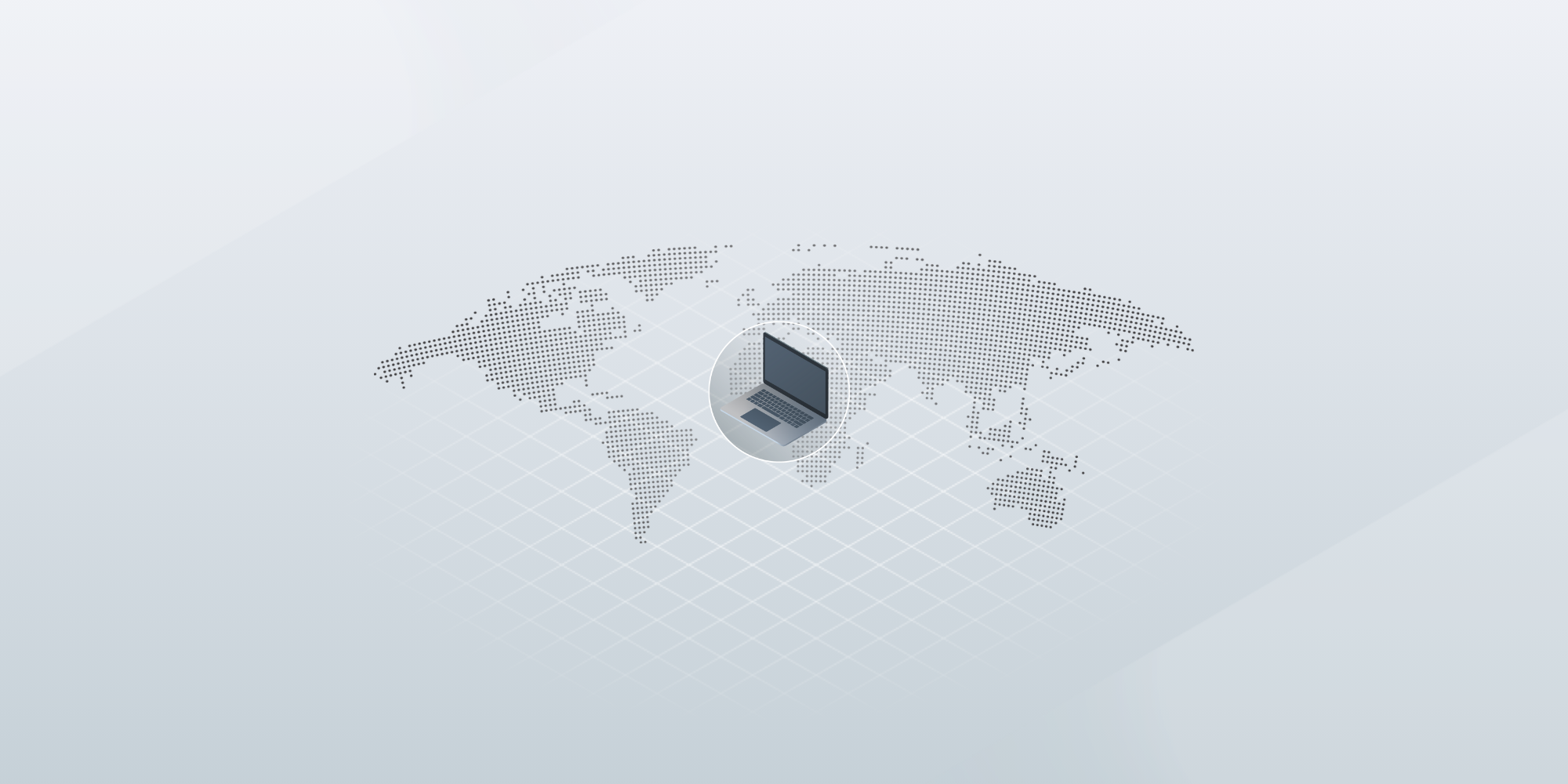Procure Devices for Global Expansion: Strategies for Success
 GroWrk Team
GroWrk Team
You've just announced a new office in Dublin, São Paulo, or Singapore—congratulations on reaching this growth milestone. However, while leadership is celebrating the expansion, your IT team is already calculating the logistical nightmare that lies ahead.
Opening a new location comes with considerable costs and logistical challenges, including hiring new employees to support the business. How do you provision laptops, monitors, and mobile devices for 50 new hires in a country where you’ve never operated before? What about customs regulations, local vendors, and the inevitable rush order that needs to arrive yesterday?
This guide is designed for IT managers and procurement leads who require a strategic framework and practical guidance to scale device procurement globally. Device procurement enables companies to serve more clients and build a more substantial brand presence in new regions.
Key takeaways
-
Device procurement is key to operational efficiency and employee productivity and directly impacts a business’s ability to adapt to economic fluctuations.
-
IT teams need to ensure procurement aligns with business objectives, integrates with existing systems, and complies with local regulations during regional expansions.
-
Best practices, such as using regionally distributed vendors and technology, can save costs and improve operational reliability.
The roles of IT teams in device procurement

IT teams play a central role in successful device procurement. Their role extends beyond ordering hardware—they ensure that every device supports security policies, integrates seamlessly with core systems, and meets the needs of employees.
During regional expansions, IT is responsible for:
-
Ensuring infrastructure compatibility: Devices must work seamlessly within the organization’s broader IT environment.
-
Maintaining compliance: Devices need to meet local security, privacy, and import/export regulations.
-
Aligning with business goals: Procurement decisions should support operational priorities like speed, scalability, and user experience.
When IT teams are involved early, they can guide strategic vendor selection, reduce post-deployment support issues, and help avoid costly missteps that impact employee productivity.
Addressing digital readiness
Before expanding into new markets, assessing digital readiness is essential. Without stable infrastructure and regulatory alignment, even well-funded procurement plans can fail.
Key considerations include:
-
Infrastructure gaps: Identify whether existing networks, software, and support systems can handle additional devices. For example, can your current VPN handle remote logins from a new region?
-
Regulatory compliance: Each country has unique rules around data residency, wireless standards, and device certifications. Failing to address these can result in customs delays or legal risks.
-
Governance and risk management: Establish internal ownership for device deployment, data protection, and vendor compliance across geographies.
Digital readiness is the foundation for scalable procurement. By resolving compatibility and compliance issues in advance, IT teams can avoid downstream disruptions and ensure devices arrive configured, compliant, and ready for use.
What makes global device procurement complex
Procuring devices across borders isn’t just a scaled-up version of domestic purchasing—it’s an entirely different operational challenge. Global expansion introduces logistical, regulatory, and strategic variables that must be anticipated early.
1. International shipping delays
-
Ocean freight can take 30–45 days; air freight is faster but expensive.
-
Customs clearance, regional holidays, and port bottlenecks can add weeks to delivery timelines.
-
These delays directly impact onboarding and business continuity.
2. Local import and export regulations
-
Some regions restrict certain device components or require certifications.
-
Regulations may vary by country and can shift quickly, requiring ongoing monitoring.
-
Incorrect documentation or non-compliant devices can stall shipments at customs.
3. Vendor coverage gaps
-
Your trusted domestic vendors may lack presence or support in new markets.
-
Global vendors might rely on third parties with inconsistent service levels.
-
Coverage gaps often create delivery challenges in non-urban or developing areas.
4. Budget variability and forecasting
-
Currency fluctuations and local tax structures complicate cost projections.
-
A $1,000 laptop may cost significantly more (or less) in different regions.
-
Unplanned duties, tariffs, and administrative fees can break budgets.
5. Regional sustainability and lifecycle standards
-
E-waste regulations differ globally; some countries require certified recyclers or special disposal methods.
-
Secure data destruction policies that comply locally may not meet international standards.
-
Retrieval logistics for offboarding also vary by country and can become costly or non-compliant.
Key considerations for global device procurement
.png?width=600&height=300&name=procure%20devices%20(1).png)
Scaling internationally means your procurement strategy must do more than deliver devices—it has to support business continuity, compliance, and growth. Below are the core considerations IT and procurement leaders should align on before expansion begins:
Inventory strategy
-
Centralized vs. Regional warehousing: Central inventory can reduce costs, but long lead times may disrupt international rollouts. Regional warehousing offers speed and flexibility but often comes with higher commitments.
-
Hybrid approach: Many global teams use a mix—centralized inventory for standardized setups and local stock for high-priority regions or frequent hires.
-
Capacity planning: Forecast demand by region. A lean inventory might lower overhead but could leave teams scrambling during hiring surges or backorders.
Vendor coverage
-
Global doesn’t always mean local: Ask vendors for specifics—do they have warehousing in your expansion regions? How do they fulfill orders in secondary cities or remote areas?
-
Service Level Agreements (SLAs): Don’t rely on vague promises. Get documented SLAs, escalation procedures, and customer references for the regions you’re targeting.
-
Balancing redundancy and simplicity: Multiple vendors can reduce risk but increase complexity. Consolidate only when you can still ensure consistent coverage.
Compliance requirements
-
Hardware compatibility: Regional differences like power adapters, keyboard layouts, or Wi-Fi certification can affect usability.
-
Data and security regulations: Some countries enforce strict data residency or hardware sourcing rules. Plan for secure configuration, tracking, and data destruction protocols by region.
-
Legal support: Consider partnering with local legal or compliance consultants, especially in high-regulation markets like the EU or APAC.
Onboarding timelines
-
Longer lead times abroad: Domestic provisioning may take 2–3 days; international setups could take weeks depending on customs, courier availability, or infrastructure.
-
Set realistic expectations: Work closely with HR and operations to align hiring timelines with delivery lead times. Over-communicate buffer periods to avoid frustration.
Retrieval readiness
-
Lifecycle planning: Define how devices will be recovered, sanitized, and decommissioned before entering a region, not after an employee leaves.
-
Reverse logistics: Determine whether to ship devices back, donate locally, or use secure wipe solutions. International retrievals often incur higher costs and necessitate third-party coordination.
Overcoming operational challenges
Even the best-laid procurement strategies face friction when international expansion begins. Operational hurdles, such as shipping delays, inventory shortages, and inconsistent device standards, can cause onboarding bottlenecks, increase IT workload, and frustrate new hires. To stay ahead, IT teams must identify and mitigate these risks early.
Common operational challenges
-
International shipping disruptions: Customs holdups, regulatory confusion, and unpredictable freight timelines.
-
Inventory mismanagement: Overstocking or understocking due to poor forecasting or lack of real-time visibility.
-
Lack of hardware standardization: Inconsistent device models across regions complicate support and increase IT workload.
These issues affect onboarding timelines, increase costs, and create security risks—especially when last-minute purchases or ad-hoc configurations become the norm.
How to Overcome These Challenges
1. Monitor Global Shipping Conditions
Stay ahead of potential disruptions by monitoring global shipping trends and regional delays. Use tools and partners that provide transparent tracking and clear escalation paths. Build buffer time into procurement timelines.
2. Partner with Local Vendors
Working with vendors that have local or regional warehouses reduces lead times, minimizes customs friction, and improves supply chain resilience. This also lowers your carbon footprint and shipping costs.
3. Implement Strategic Inventory Planning
Adopt inventory strategies like:
-
Just-in-time (JIT): For lean teams with reliable local vendors.
-
Hybrid models: Centralized inventory for standard equipment, local stock for high-priority regions or urgent hires.
-
Demand-based forecasting: Work closely with HR to project hiring volume by region.
4. Standardize Hardware Across Regions
Using consistent device SKUs simplifies procurement, onboarding, support, and asset tracking. Standardization also improves lifecycle management, reduces complexity for IT, and keeps procurement predictable.
Best practices for efficient device procurement
.png?width=600&height=300&name=procure%20devices%20(2).png)
Scaling device procurement globally requires more than just vendor outreach—it calls for proactive planning, strategic vendor selection, and clear operational playbooks. These best practices help IT and procurement teams streamline processes, reduce costs, and maintain consistency during international growth.
| Best practice | Why it matters | Actionable tip |
|---|---|---|
| Use regionally distributed vendors | Reduces delivery times, customs delays, and international shipping costs. | Partner with vendors that have warehousing in target markets for faster fulfillment and local support. |
| Preload and pre-tag devices | Avoids delays and ensures consistent configuration, especially where there’s no local IT support. | Work with vendors to install software, apply asset tags, and configure settings before shipping. |
| Forecast regional hiring | Prevents last-minute orders and aligns inventory with hiring cycles. | Collaborate with HR to project hiring by region and timeline. Use this data to maintain appropriate inventory levels. |
| Evaluate customs, taxes, sustainability | Hidden costs and delays can offset initial savings; sustainability may be a business requirement. | Assess total cost of ownership—including duties, taxes, and carbon footprint—and prioritize vendors who handle compliance and customs. |
| Establish communication protocols | Miscommunication between teams can delay onboarding and cause confusion. | Create shared documentation, escalation paths, and use centralized tools for status tracking and delivery updates. |
| Build contingency plans | Delays from customs, inventory issues, or failures can disrupt operations. | Pre-approve emergency budgets, identify backup vendors, and consider short-term rental options in key markets to maintain operational continuity. |
Preparing for unexpected downturns
.png?width=600&height=300&name=procure%20devices%20(3).png)
Unexpected downturns—whether economic, political, or operational—can derail global procurement plans. A proactive risk management strategy helps businesses respond quickly, mitigate impact, and maintain continuity across regions.
This means identifying risks early—from geopolitical tensions to supplier failures—and aligning contingency planning with your organization’s strategic objectives.
Building contingency plans
Only 1 in 4 companies can predict supply disruptions, making inventory planning and fulfillment timelines harder to manage.
To stay ahead, organizations should develop robust contingency plans that address a range of disruption scenarios.
Key elements of an effective contingency plan:
-
Clear, predefined actions for common supply chain failures
-
Communication protocols that keep internal teams aligned
-
Response playbooks for personnel shortages or vendor breakdowns
-
Multiple modeled scenarios for regional disruptions or global slowdowns
Having this structure in place ensures your team can pivot quickly—without stalling critical operations.
Monitoring market trends
Anticipating changes in demand, supply availability, or pricing requires constant awareness of external factors.
Why it matters:
-
Staying informed helps optimize procurement timing and sourcing strategies
-
Market trends often reveal cost-saving opportunities or new regional vendors
-
Adaptive planning keeps your procurement strategy aligned with global shifts
By proactively tracking industry benchmarks and economic signals, businesses can adjust procurement models to stay competitive and agile—even when markets fluctuate.
Empowering action before expansion begins
Smart global procurement doesn’t start after a company enters a new market—it starts well before. Strategic preparation ensures your procurement processes can support growth without breaking operations, draining resources, or causing costly delays.
Before expansion begins, companies should align procurement decisions with both budget constraints and technology requirements. A well-planned approach allows for faster product launches, smoother operations, and stronger market entry in new regions.
Free resources, pilot programs, or vendor trials can support early-stage planning. With the right foundation, procurement becomes a competitive advantage, not just a back-office function.
Conducting thorough market research
Expanding without research is risky. Market research helps identify growth opportunities, understand demand drivers, and avoid costly missteps.
What to assess before expansion:
-
Local competition and supplier ecosystems
-
Customer expectations and product needs by region
-
Delivery lead times, pricing norms, and import regulations
-
Regulatory and political factors affecting procurement and distribution
This research should cover high-income markets, middle-income countries, and emerging economies alike—since procurement logistics, vendor reliability, and pricing power vary dramatically. A well-researched procurement plan enables adaptation to these regional differences.
Setting strategic goals for more customers
Your procurement efforts should serve your business goals—not the other way around. Setting clear, actionable goals gives procurement teams the direction they need to support expansion initiatives.
Examples of strategic goals might include:
-
“Provision 100% of new hires within 5 business days in all new markets”
-
“Lower per-device shipping costs by 15% within the next two quarters”
-
“Ensure full compliance with local e-waste and device disposal regulations”
Tracking success against defined procurement KPIs helps teams course-correct early and prove ROI to stakeholders. When goals are measurable, cross-functional teams stay aligned from planning to execution.
Prioritizing financial planning
Expansion without financial clarity is one of the fastest ways to derail momentum. Procurement teams must work closely with finance to forecast costs, identify capital needs, and build buffers for unexpected expenses.
Key planning considerations:
-
Include duties, taxes, tariffs, and shipping in total cost estimates
-
Track local currency fluctuations and plan for FX risk
-
Allocate an emergency fund covering 3–6 months of operating expenses
-
Consider the cost of device retrieval, repair, or replacement abroad
By prioritizing financial planning early, companies can maintain operational stability and avoid liquidity issues—especially in new, untested markets.
Employee training for expansion
.png?width=600&height=300&name=procure%20devices%20(4).png)
Training is often the missing piece in global expansion plans. No matter how good your hardware or procurement process is, it’s people who make or break your rollout. Preparing teams—especially in new markets—to use company tools effectively is essential for smooth operations, strong customer experiences, and long-term growth.
Well-executed training reduces onboarding time, increases adoption of critical systems, and minimizes support tickets. It also ensures employees meet internal security and compliance standards from day one.
Upskilling IT staff for new markets
Expanding into new regions means navigating unfamiliar infrastructure, vendors, and regulatory environments. Your IT teams must be equipped to handle this complexity.
Focus areas for IT upskilling:
-
Regional compliance (e.g., data protection, power and hardware standards)
-
Device management tools and provisioning in international contexts
-
Local networking, connectivity, and cybersecurity risks
-
Remote support workflows for distributed teams
When IT staff are properly trained, the business reduces risk and accelerates time-to-productivity across new markets.
Onboarding local teams with new devices
New hires need more than a laptop—they need confidence. A frictionless onboarding experience gives local employees the tools, access, and support they need to contribute immediately.
Best practices for onboarding with new devices:
-
Ship devices preconfigured with required apps, permissions, and security protocols
-
Offer virtual or on-site orientation for new hardware and workflows
-
Provide quick-reference materials for local IT escalation and support
Clear onboarding reduces confusion, increases productivity, and sets the tone for a strong employee experience—critical when entering competitive new markets.
Performance metrics for expansion
Measuring success isn’t just about opening new offices—it’s about how effectively those offices perform and scale. To track ROI on global expansion, companies need clear, actionable performance metrics tied to both operational efficiency and strategic goals.
These metrics help identify what's working, where adjustments are needed, and how to allocate resources effectively across new markets.
Tracking procurement efficiency
Procurement performance directly affects onboarding speed, device availability, and budget control. Tracking the right metrics helps your team improve procurement cycles and adapt quickly.
Key procurement metrics to monitor:
-
Average lead time from device order to delivery
-
First-time success rate for device provisioning and onboarding
-
Total cost per device, including duties, shipping, and configuration
-
Supplier performance scores, including SLA adherence and response time
-
Inventory turnover rates by region
By benchmarking and regularly reviewing these metrics, IT and procurement leads can make data-driven improvements, reduce delays, and ensure consistency across markets.
Case study: How Illumio scaled global procurement with GroWrk
Expanding globally, Illumio struggled to equip new hires in regions like Japan and Brazil due to a lack of legal entities, unresponsive vendors, and manual procurement workarounds.
Problem
Without local entities, Illumio couldn’t reliably source and deliver IT equipment in key markets. Onboarding was delayed, vendors were difficult to manage, and IT had to ship loaners or create manual processes — adding time, risk, and complexity.
Solution
Partnering with GroWrk gave Illumio access to a centralized platform for global procurement. Devices were pre-configured, shipped from regional warehouses, and delivered with SLA-backed timelines — no local entities or vendor juggling required.
Outcome
Illumio eliminated onboarding delays, gained 100% coverage in regions without local entities, and reduced IT workload. GroWrk’s support enabled fast, scalable provisioning — turning procurement into a competitive advantage as the company grew internationally.
How GroWrk simplifies global device procurement
Traditional procurement processes break down fast when teams expand across borders. GroWrk was built specifically to solve this problem—helping IT and procurement leaders ship, track, and recover devices in 150+ countries without relying on patchwork vendor networks or risky manual workarounds.
Here’s how GroWrk supports global expansion from day one:
-
Global provisioning with local execution
Ship laptops, monitors, and accessories to employees in 150+ countries from regional warehouses—no local entity required. GroWrk handles customs, import documentation, and last-mile logistics so your team doesn’t have to. -
SLA-backed delivery and retrieval
Meet onboarding timelines with guaranteed delivery windows. GroWrk commits to specific SLAs for device shipment and recovery, so your new hires are ready on day one—and offboarded securely when the time comes. -
Built-in compliance and regulatory support
Stay compliant in every region with support for customs rules, e-waste disposal laws, power standards, and more. GroWrk ensures every shipment meets local requirements—avoiding customs delays and audit risks. -
Centralized platform for asset visibility
Track every device from procurement through deployment, retrieval, and retirement. See inventory by region, employee, or lifecycle stage with real-time updates that eliminate blind spots and spreadsheets. -
Preconfigured, IT-approved devices
Devices are shipped preloaded with your company’s apps, security protocols, and asset tags—reducing IT workload and getting employees productive faster, even in locations without local tech support. -
Scalable support without vendor sprawl
Replace a tangle of local resellers and couriers with a single, integrated system. GroWrk’s platform scales with your hiring plans—whether you're growing in São Paulo, Dublin, or Singapore.
Ready to simplify global device procurement and scale with confidence? Book a demo with GroWrk to see how we make international IT logistics effortless.
Frequently asked questionsWhy is device procurement important for business expansion?
Device procurement is key to business expansion as it increases operational efficiency and employee productivity and therefore performance and satisfaction within the organisation. By prioritising this process the business can scale and maintain high operational standards.
What role do IT teams play in device procurement?
IT teams play a key part in device procurement by ensuring devices integrate with existing systems, meet user requirements and comply with regulations so procurement aligns with the organisation’s strategy. Their involvement is critical to maximise technology investments.
How can businesses manage pricing uncertainty in global device procurement?
To manage pricing uncertainty in global device procurement businesses should use predictive analytics, stay on top of market trends and adapt their procurement strategy to economic changes. This proactive approach will mitigate price risk.
What are the benefits of standardizing hardware SKUs in procurement?
Standardising hardware SKUs in procurement increases efficiency by streamlining processes, reducing complexity and simplifying supply chain management and ultimately saves cost. This leads to better operational practices.
How can companies prepare for unexpected downturns in procurement?
To prepare for procurement downturns companies should have contingency plans, monitor market trends and prioritise financial planning to maintain liquidity and operational stability. This proactive approach is key to navigating economic challenges.




.png)

